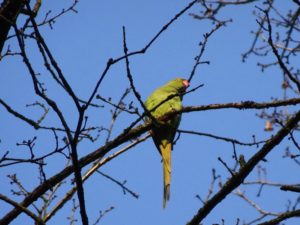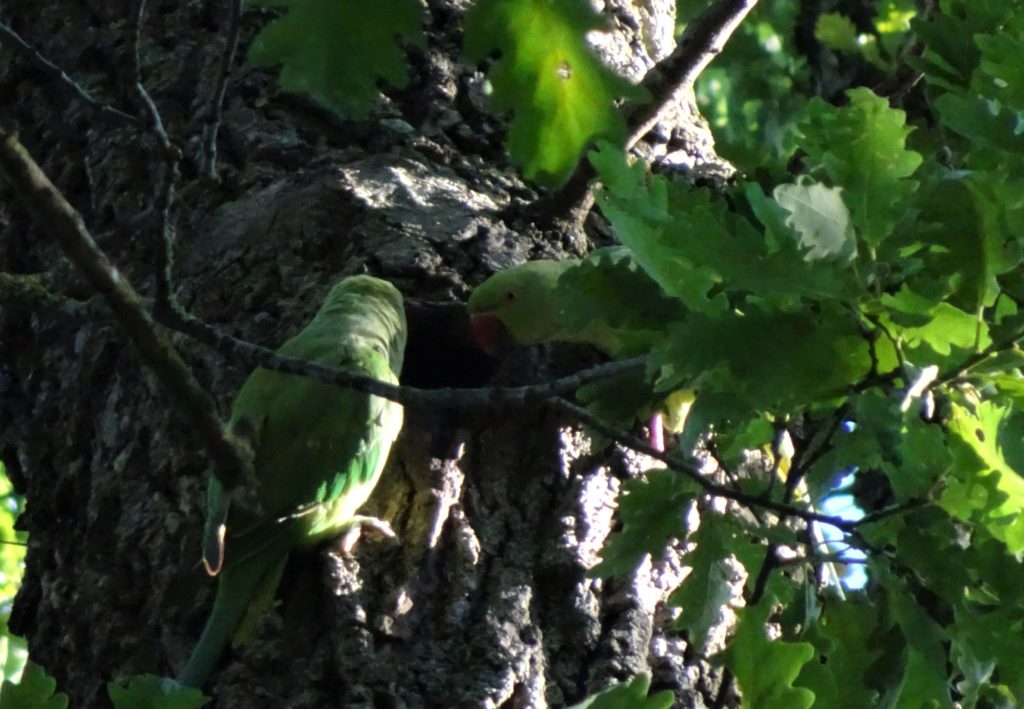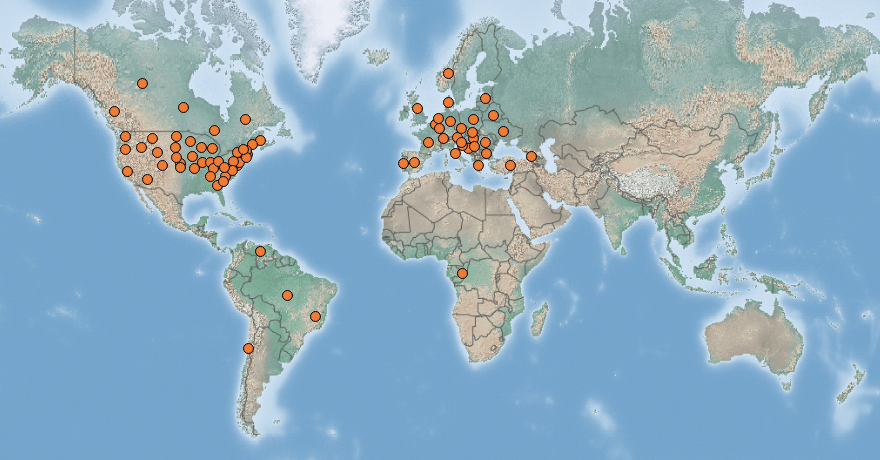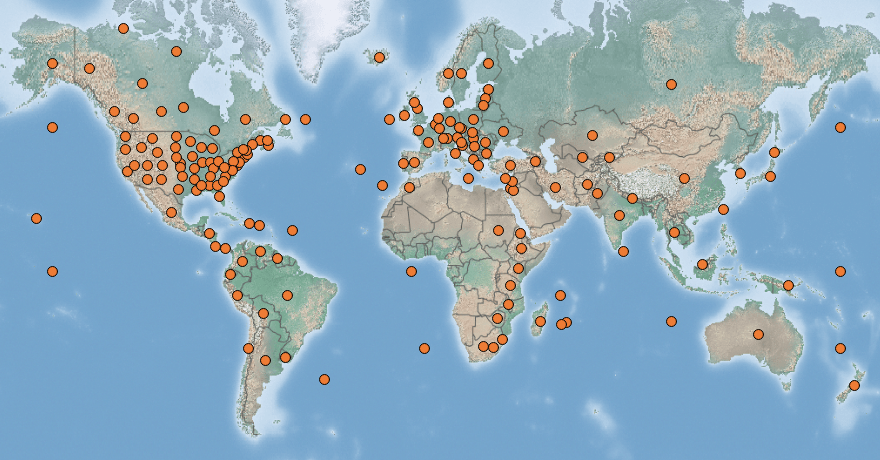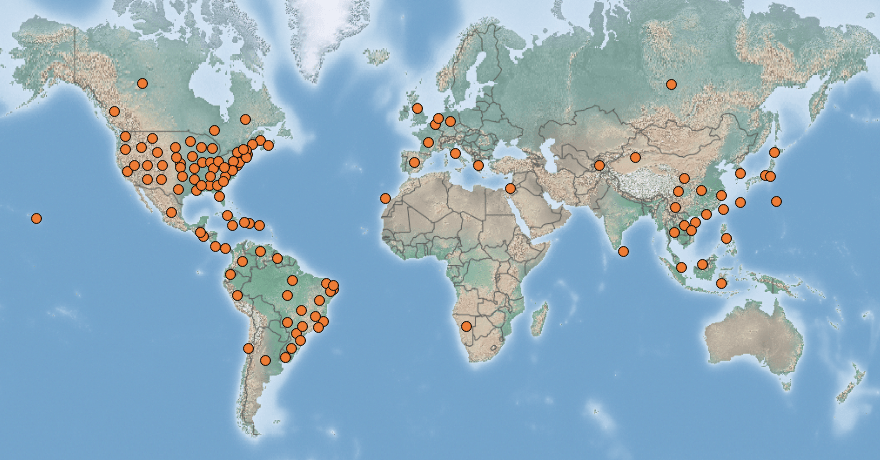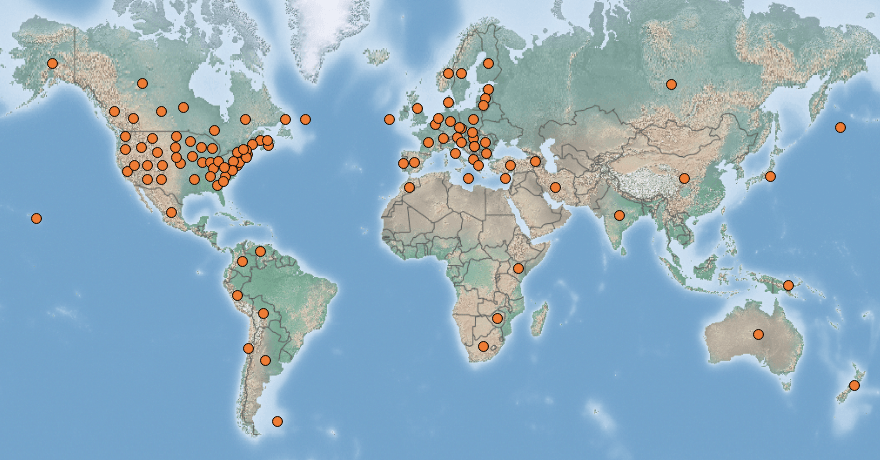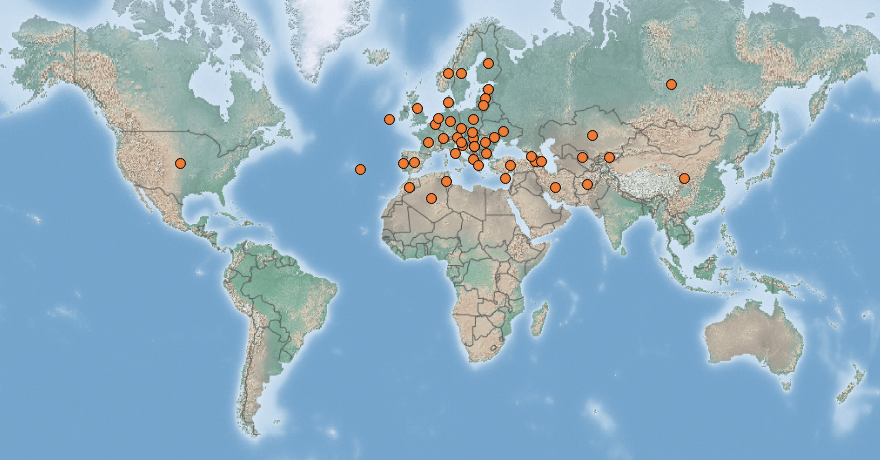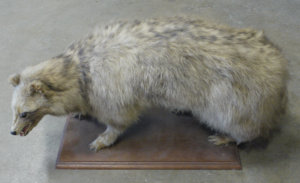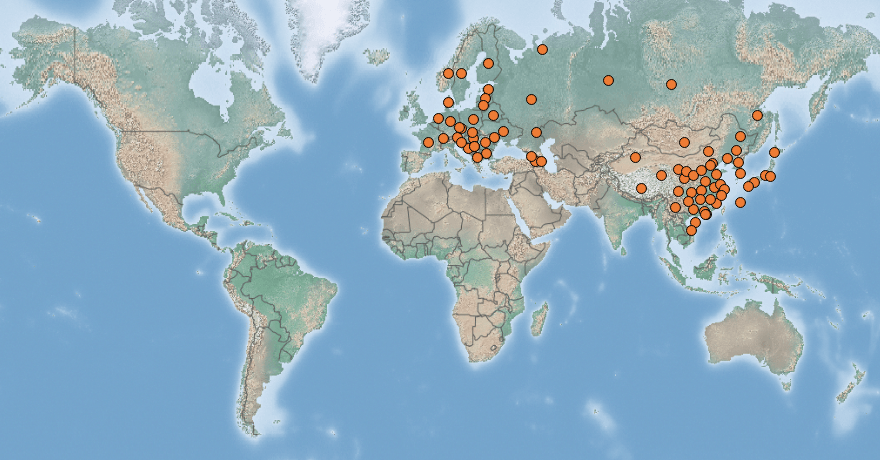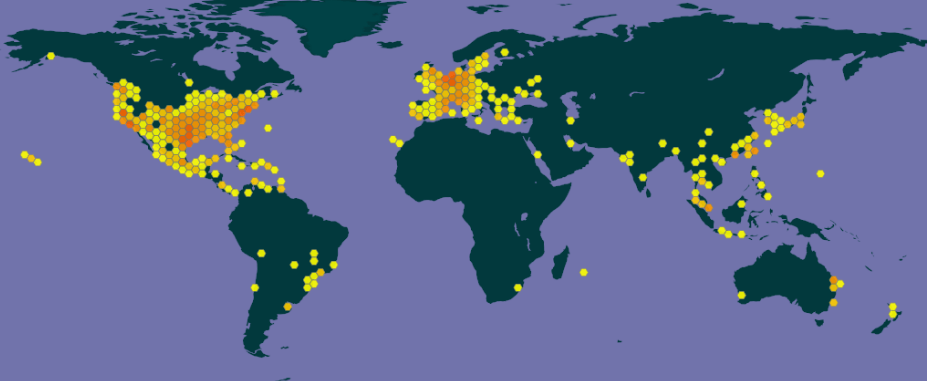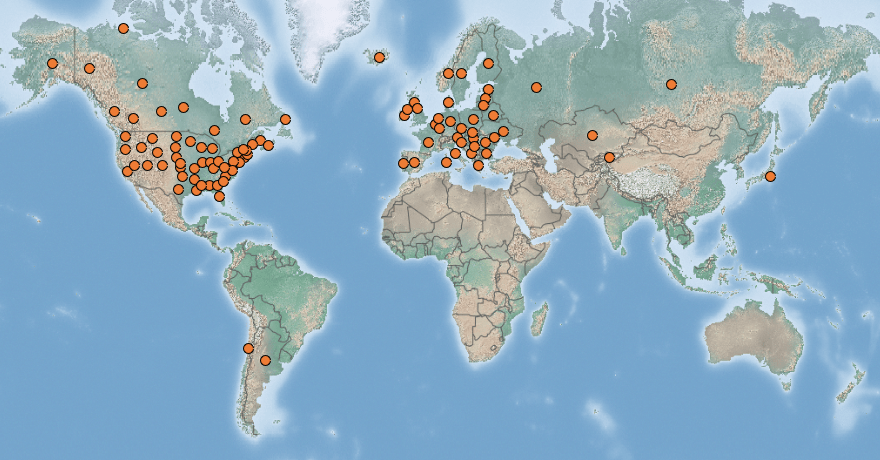 |
Red-eared slider |
Status LU: established. 1st record: ? |
 |
Routbaken-Deckelsmouk |
Status Eur.: established. IAS of EU concern (2016). |
 |
Tortue de Floride |
RA: ISEIA: C1. Harmonia+: 0,10 |
 |
Rotwangen-Schmuckschildkröte |
Wikipedia:     | Wikispecies: | Wikispecies:  |
 |
Roodwangschildpad |
Back to the list of vertebrates |
Brief description
 Trachemys scripta elegans (Wied-Neuwied, 1839) is a semiaquatic turtle belonging to the family Emydidae. It is a subspecies of the pond slider and is popular as a pet across the world. Because of this, they are the most commonly traded turtle in the world. Red-eared sliders are native to the southern United States and northern Mexico, but have become established in other places because of pet releases, and have become an invasive species in many areas where they outcompete native species. The red-eared slider is included in the list of the world’s 100 most invasive species published by the IUCN. When they mature they can inflict painful bites, leading irresponsible owners to release them into the wild with negative ecological, social and, economic impacts (Wikipedia contributors 2020).
Trachemys scripta elegans (Wied-Neuwied, 1839) is a semiaquatic turtle belonging to the family Emydidae. It is a subspecies of the pond slider and is popular as a pet across the world. Because of this, they are the most commonly traded turtle in the world. Red-eared sliders are native to the southern United States and northern Mexico, but have become established in other places because of pet releases, and have become an invasive species in many areas where they outcompete native species. The red-eared slider is included in the list of the world’s 100 most invasive species published by the IUCN. When they mature they can inflict painful bites, leading irresponsible owners to release them into the wild with negative ecological, social and, economic impacts (Wikipedia contributors 2020).
The competitive advantages of the slider may include lower age at maturity, higher fecundity, and larger adult body size. Turtles may compete for food, egg-laying sites, or basking places. Other studies have also shown red-eared sliders to compete with indigenous species for food and basking sites. Competitive interactions between T. scripta elegans and the European pond turtle (Emys orbicularis) are of particular interest, as the latter is registered as an endangered species (Appendix II of the Bern Convention). Turtles introduced near Paris were revealed to have consumed aquatic plants and animals (mostly arthropods and molluscs). Continuous releasing of exotic pet turtles in natural ecosystems increases the risk of parasite transmission to native species; the red-eared slider is known to carry nematodes. Reptiles, including turtles, are well-recognised reservoirs for Salmonella, and are a source of human salmonellosis (Global Invasive Species Database 2020).
IAS of Union concern
In 2016, the species Trachemys scripta (Thunberg in Schoepff, 1792), to which belongs the present subspecies Trachemys scripta elegans, was added to the list of invasive alien species of Union concern (Anonymous 2016) under it’s synonym Trachemys scripta (Schoepff, 1792). This implies that member states shall take all necessary steps to prevent it’s unintentional introduction or spread.
Status and distribution in Luxembourg
Currently, 15 records of Trachemys scripta elegans (Wied-Neuwied, 1839) in Luxembourg are accessible through the MNHNL-mdata portal (MNHNL, iNaturalist & GBIF 2020).
Notwithstanding the EU import suspension of this species since 1997, every year new records of this turtle are reported in most European countries, due to ongoing dumping of animals formerly kept as pets into the wild. Occurrences in Luxembourg include the gravel pit area in Remerschen-Wintringen, the Lower Sauer close to Diekirch, the Brill area in Schifflange, the ponds Braakeweier (Kockelscheuer) and Gipsweieren (Bridel/Steinsel) and the Alzette north of Hunsdorf.
In 2024, some 340 records of the two subspecies Trachemys scripta scripta (Thunberg in Schoepff, 1792) and Trachemys scripta elegans (Wied-Neuwied, 1839) in Luxembourg are accessible through the MNHNL-mdata portal (MNHNL, iNaturalist & GBIF 2024).The status of these two taxa remains unclear though.
Invasive pond sliders have been observed climbing the platforms of waterbirds, especially great crested grebes (Podiceps cristatus), to sunbathe, thus preventing successful breeding (Konter 2020: 81). Although there is currently every indication that turtle hatchlings are unable to produce viable embryos in the climatic conditions currently prevailing in Luxembourg, this could change with global warming (De Sousa 2020).
Management
Action plan
An action plan concerning the two subspecies has been published in 2020:
→ Finalised Action Plan for Trachemys scripta (De Sousa 2020)
Risk assessment
ISEIA protocol
C1 (1+2+3+1) (Ries et al. 2014: 199).
Harmonia+ protocol
Overall risk score 0,10 = (Overall Invasion score 0,53 x Overall Impact score 0,18) (evaluated by Sandra Cellina, Roland Proess and Manou Pfeiffenschneider).
0,53


Invasion
0,18


Impact
0,10


Risk
Worldwide distribution
Fact sheet
PDF fact sheet of the Nature and Forestry Administration: FR | DE
Other Trachemys taxa
The pond slider Trachemys scripta (Thunberg in Schoepff, 1792) has three subspecies (Wikipedia contributors 2020b), of which the first two occur in Luxembourg:
- Trachemys scripta scripta (Thunberg in Schoepff, 1792), the yellow-bellied slider;
- Trachemys scripta elegans (Wied-Neuwied, 1839), the red-eared slider;
- Trachemys scripta troostii (Holbrook, 1836), the Cumberland slider. According to GBIF (2019b) this subspecies is already present in Europe (Belgium, The netherlands, Germany, Poland and Spain)
Bibliography
- Anonymous, 2016. Commission implementing regulation (EU) 2016/1141 of 13 July 2016 adopting a list of invasive alien species of Union concern pursuant to Regulation (EU) No 1143/2014 of the European Parliament and of the Council. Official Journal of the European Union L 189: 4-5.
- De Sousa, T., 2020. Plan d’action pour espèces exotiques envahissantes au Grand-Duché de Luxembourg: la Tortue de Floride, Trachemys scripta ssp. (Schoepff, 1792). Version 2020-09-04. Administration de la nature et des forêts, Luxembourg. 24 pp.
- GBIF, 2019a. Trachemys scripta subsp. elegans (Wied, 1838) in GBIF Secretariat (2019). GBIF Backbone Taxonomy. Checklist dataset https://doi.org/10.15468/39omei [accessed 2020-04-27]
- GBIF, 2019b. Trachemys scripta subsp. troostii (Holbrook, 1836) in GBIF Secretariat (2019). GBIF Backbone Taxonomy. Checklist dataset https://doi.org/10.15468/39omei accessed via GBIF.org on 2020-04-27.
- Global Invasive Species Database, 2020. Species profile: Trachemys scripta elegans. URL: http://www.iucngisd.org/gisd/speciesname/Trachemys+scripta+elegans [accessed 2020-05-07].
- Konter, A., 2020. Schmuckschildkröten Trachemys scripla verhindern mehrere Haubentaucherbruten Podiceps cristalus auf dem Echternacher See. Regulus Wissenschaftliche Berichte 35: 81-86.
- MNHNL, iNaturalist & GBIF, 2020. in MNHNL-mdata, online portal combining species observation from Recorder-Lux, iNaturalist and GBIF. National Museum of Natural History, Luxembourg. URL: https://mdata.mnhn.lu [accessed 2020-04-27]
- Proess, R. (éd.), 2007. Verbreitungsatlas der Reptilien des Großherzogtums Luxemburg. Ferrantia 52, Musée national d’histoire naturelle, Luxembourg, ISSN 1682-5519, 58 pp.
- Ries, C., M. Pfeiffenschneider, Engel, E., J.-C. Heidt & M. Lauff, 2014. Environmental impact assessment and black, watch and alert list classification after the ISEIA Protocol of vertebrates in Luxembourg. Bull. Soc. Nat. luxemb. 115: 195-201. [PDF 247 KB]
- Wikipedia contributors, 2020. ‘Red-eared slider’, Wikipedia, The Free Encyclopedia, 23 March 2020, 02:48 UTC, <https://en.wikipedia.org/w/index.php?title=Red-eared_slider&oldid=946907243> [accessed 2020-04-27]
Page content last updated on 2024-07-31. Last proofread by Caroline Grounds on 2019-11-29.





